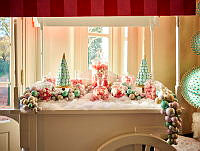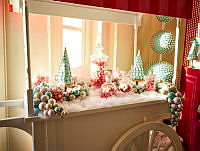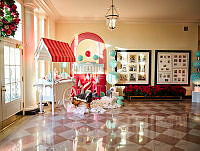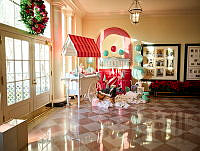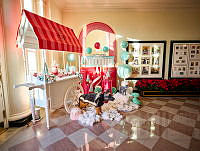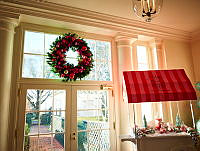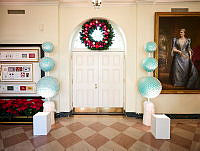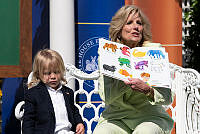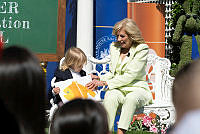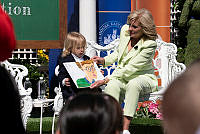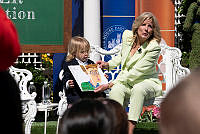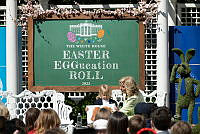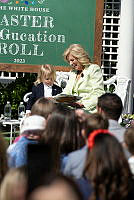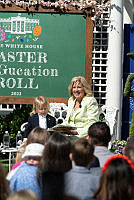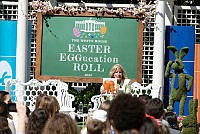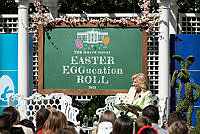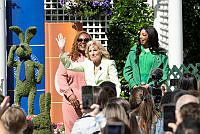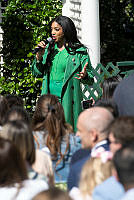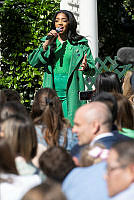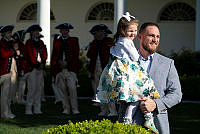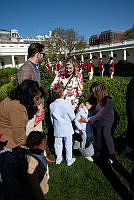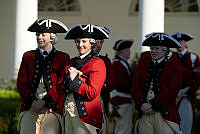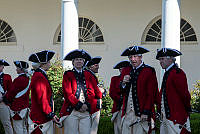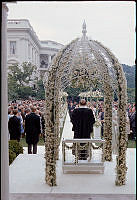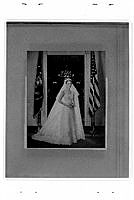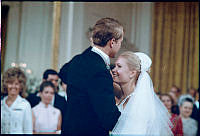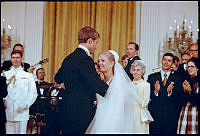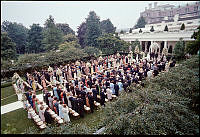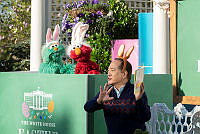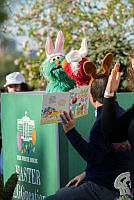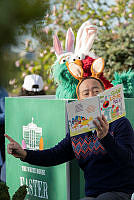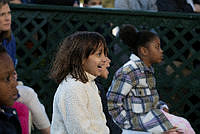Gardening Past at the White House
A Foreword: White House History Number 38
Copyright © Summer 2015 White House Historical Association. All rights reserved under international copyright conventions. No part of this article may be reproduced or utilized in any form or by any means, electronic or mechanical, including photocopying, recording, or by any information storage and retrieval system, without permission in writing from the publisher. Requests for reprint permissions should be addressed to books@whha.org
George Washington in 1792 had set aside 85 acres for the “President’s Square,” presumably to have paddocks, sheepfolds, hay fields, meadows, and the other usual attachments to country houses, in addition to vegetable gardens to serve the table and ornamental plantings for pleasure. Washington himself had all of this at Mount Vernon and clearly deemed it appropriate to the official residence of the “first gentleman of the land.”
Thomas Jefferson was the first garden-loving president. Nearly two centuries later, John F. Kennedy pored over his distant predecessor’s published notebooks with relish, finding that President Jefferson had organized the site and created a barrier against unhealthy swamps and marshland that terminated the long southward slope of the grounds. Jefferson had fenced the 85 acres down to 18 and, by introducing a fortress-like stone retaining wall, “cut” the terrain vertically. He filled the part toward the house with topsoil sufficient to make a level surface. A parapet that rose about 3 feet above the retaining wall rambled at the same height around the 18 acres, making a unifying garden wall. The result was to give the house a podium or base. The third president’s improvements, like the wall, remained characteristics of the grounds until a decade after the Civil War. The remainder of the retaining wall was destroyed by 1873, when a successful garden program of extensive fill and grading under President Ulysses S. Grant ended the need for it.

The White House gardens.
The White House Historical AssociationMajor change thus came to the White House after long intervals. Those presidents after Jefferson who instigated major alterations and improvements were James Monroe, Andrew Jackson, Millard Fillmore, Ulysses S. Grant, Woodrow Wilson, Franklin D. Roosevelt, and John F. Kennedy. To carry out Jefferson’s podium, Monroe ordered a massive program of land filling. Under Jackson an orangery was established, and both flower and vegetable gardens adorned the grounds. Legend has it that Jackson planted a local Tennessee version of the Magnolia grandiflora on the south side. President Grant appointed his friend General Orville Babcock, with total authority, to turn the grounds into pleasure gardens, which he did, planting trees and building two great fountains, one on the North Grounds, the other on the South Grounds. Both still function night and day.
First Lady Ellen Axson Wilson, in her short time in the White House, created the first rose garden, known as the West Garden, and directed many additional improvements in the grounds. She called in America’s two most famous landscape gardeners of the time, Beatrix Farrand and George Burnap. President Franklin D. Roosevelt commissioned Frederick Law Olmsted Jr. to rethink the grounds with security in mind, and it was Olmsted who undertook a massive regrading of the South Lawn, throwing up high berms along the sides, planting them heavily with trees, blocking views of the White House up close, while leaving the view from the end of the grounds back to the house largely stripped of trees, open and intact.
The most recent period of critical change, following these earlier ones, was 1961–63, a major renovation designed and supervised, as a volunteer, by Rachel Lambert Mellon. Sensitive to the past, and the White House gardens as she found them, Mrs. Mellon modernized along the old landscape lines. She shifted the plan to symmetrical correctness and introduced to the White House more varieties of garden plants than it had ever known. Color became a prime element in her designs. Floriculture had about died at the White House with the demolition of the greenhouses and conservatories sixty years before. Under Mrs. Mellon the grounds entered a new age. When she was finished with her work, the White House was literally nestled in flowers.







